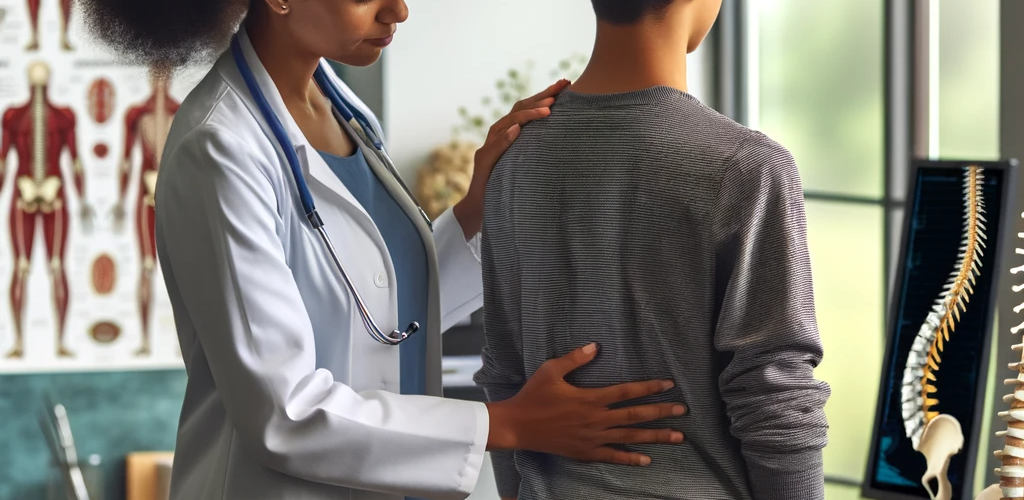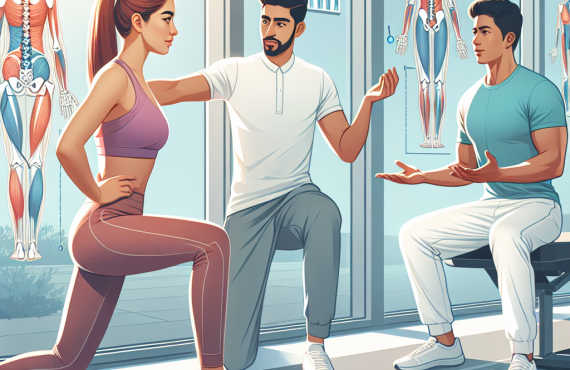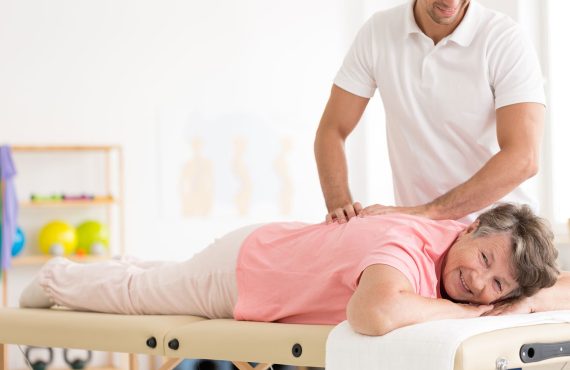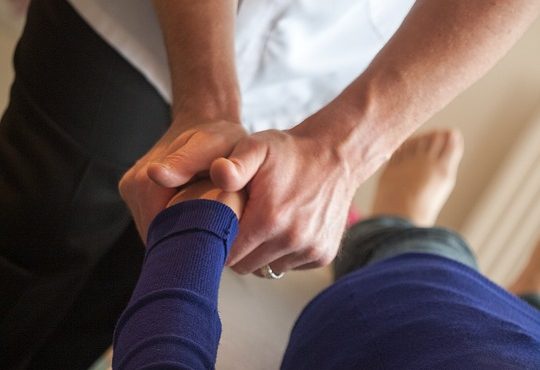If you’re experiencing back pain or discomfort and suspect that scoliosis may be the culprit, you’re in the right place. At Henry Chiropractic, owned and operated by Dr. Craig Henry, you’ll find the help you need. Dr. Henry is a licensed chiropractor who is committed to improving your health and wellness in every aspect of your life. Alongside Dr. Henry, Dr. Aaron Hixon, a board-certified chiropractor, is also available to provide expert care. With various chiropractic techniques at their disposal, including Diversified and Gonstead Spinal Manipulation, they can assist you in managing your scoliosis and alleviate any pain or discomfort you may be experiencing. Don’t let scoliosis hold you back from feeling your best. Trust the professionals at Henry Chiropractic to help you regain control of your health.
Table of Contents
What is Scoliosis?
Scoliosis is a medical condition characterized by an abnormal curvature of the spine. Instead of being straight, the spine may curve sideways, forming an “S” or “C” shape. It can affect people of all ages, from children to adults, and its severity can vary. Scoliosis is more common in females than males, and it can have a significant impact on a person’s overall quality of life if left untreated.
Definition of Scoliosis
Scoliosis is defined as a lateral curvature of the spine exceeding 10 degrees when measured on an X-ray. It is typically classified into three categories based on the age of onset: congenital, occurring at birth; idiopathic, with no known cause and usually developing during adolescence; and neuromuscular, caused by an underlying neurological or muscular condition.
Causes of Scoliosis
While the exact cause of scoliosis is often unknown, several factors can contribute to its development. These include genetic predisposition, abnormal spinal development during pregnancy, muscle imbalances, and postural habits. In some cases, scoliosis can be associated with certain medical conditions, such as cerebral palsy or muscular dystrophy.
Types of Scoliosis
There are various types of scoliosis, depending on the cause and age of onset. Congenital scoliosis is present at birth and is typically caused by abnormal spine development during fetal development. Idiopathic scoliosis, the most common form, appears during adolescence and has no known cause. Neuromuscular scoliosis is associated with underlying neurological or muscular conditions, such as cerebral palsy or muscular dystrophy.
Symptoms of Scoliosis
Visible signs
One of the most noticeable symptoms of scoliosis is an abnormal curvature of the spine that can be visually observed. This can cause the body to appear uneven or twisted, with the shoulders, hips, or waist being at different heights. Other visible signs may include one shoulder blade protruding more than the other, an uneven waistline, or an asymmetrical rib cage.
Pain and discomfort
Scoliosis can also lead to pain and discomfort, particularly in the back and neck areas. The abnormal curvature of the spine can put additional stress on the muscles, ligaments, and joints, leading to muscle imbalances and joint dysfunction. This can result in chronic pain, stiffness, and reduced mobility.
Other associated symptoms
In addition to visible signs and pain, scoliosis can be associated with other symptoms. These may include difficulty breathing, especially with more severe curvatures that affect the positioning of the rib cage, as well as fatigue, limited physical endurance, and decreased lung capacity. In some cases, scoliosis can also cause psychological and emotional distress, particularly in adolescents who may feel self-conscious about their appearance.
Diagnosing Scoliosis
Physical examination
To diagnose scoliosis, a healthcare professional will conduct a physical examination to assess the curvature of the spine and any visible signs. They may ask you to bend forward to examine your back and observe how the spine moves and appears. Measurements may be taken to determine the degree of curvature, and the healthcare provider may also assess muscle strength and flexibility.
Medical history
The medical history is an essential component of diagnosing scoliosis. The healthcare professional will inquire about any symptoms you may have experienced, such as pain or discomfort, as well as any family history of scoliosis. They may also ask about the age of onset and the progression of the condition, which can help determine the appropriate treatment approach.
Imaging tests
Imaging tests, such as X-rays, are often used to confirm the diagnosis and assess the severity of scoliosis. X-rays provide a clear image of the spine and allow healthcare professionals to measure the degree of curvature accurately. In some cases, additional imaging tests, such as magnetic resonance imaging (MRI) or computed tomography (CT) scans, may be required to evaluate the spine in more detail or assess any underlying conditions.
Traditional Treatments for Scoliosis
Bracing
One of the traditional treatments for scoliosis, particularly in adolescents with moderate spinal curves, is bracing. A back brace is designed to help prevent the progression of the curvature and provide support to the spine. The brace is usually worn for a specific number of hours per day, and its effectiveness depends on factors such as the severity of the curvature and the patient’s compliance with wearing the brace as prescribed.
Scoliosis-specific exercises
Physical therapy and scoliosis-specific exercises are often recommended as part of the treatment plan for scoliosis. These exercises aim to strengthen and stretch the muscles surrounding the spine, improving posture and spinal alignment. They can also help alleviate pain and discomfort associated with scoliosis and improve overall mobility and function.
Surgery
In cases of severe scoliosis, where the spinal curvature exceeds a certain degree and continues to progress despite conservative treatments, surgery may be recommended. The primary goal of scoliosis surgery is to correct the spinal curvature and stabilize the spine. This is achieved through various surgical techniques, such as spinal fusion, which involves connecting and fusing the affected vertebrae using rods, screws, or other hardware.
Chiropractic Approach to Scoliosis
Understanding the spine
Chiropractors have a deep understanding of the spine and its role in maintaining overall health and well-being. They recognize that the spine is not just a structural component of the body but also a vital pathway for the nervous system, which controls and regulates every function in the body. Chiropractors understand the importance of spinal alignment and aim to restore and maintain proper spine function.
Chiropractic adjustments
Chiropractic adjustments, also known as spinal manipulations, are the cornerstone of chiropractic care for scoliosis patients. Through precise and controlled movements, chiropractors apply gentle pressure to specific areas of the spine to correct misalignments, improve spinal mobility, and reduce nerve interference. These adjustments can help alleviate pain, improve posture, and enhance overall spinal function.
Other chiropractic techniques
In addition to spinal adjustments, chiropractors may incorporate other techniques into the treatment plan for scoliosis patients. These can include exercises and stretches to improve muscle strength and flexibility, as well as therapeutic modalities, such as electrical stimulation or ultrasound, to reduce pain and promote healing. Chiropractors may also provide lifestyle recommendations, including ergonomic modifications and postural education, to support long-term spine health.
Benefits of Chiropractic Care for Scoliosis Patients
Reduced pain and discomfort
One of the significant benefits of chiropractic care for scoliosis patients is the potential for pain relief. Chiropractic adjustments and other spinal manipulations can help alleviate muscle imbalances, reduce pressure on nerves, and improve overall spinal alignment. This can lead to a reduction in pain and discomfort associated with scoliosis, allowing patients to experience a better quality of life.
Improved spinal alignment
Chiropractic care focuses on restoring and maintaining proper spinal alignment. By gently adjusting the spine, chiropractors can correct misalignments and optimize the position of the vertebrae. This can help improve the overall curvature of the spine in scoliosis patients and prevent further progression of the condition. Improved spinal alignment also contributes to better posture and increased mobility.
Enhanced quality of life
Scoliosis can significantly impact a person’s daily life and overall well-being. Chiropractic care aims to not only alleviate pain and discomfort but also enhance the overall quality of life for scoliosis patients. By improving spinal alignment, reducing nerve interference, and promoting optimal spine function, chiropractors can help patients experience improved physical function, increased energy levels, and enhanced overall well-being.
Chiropractic Care for Different Types of Scoliosis
Congenital scoliosis
Chiropractic care can be beneficial for individuals with congenital scoliosis, which is present at birth. While the abnormal spine development cannot be reversed, chiropractic adjustments and other techniques can help manage symptoms, improve spinal alignment, and enhance mobility. Chiropractors may also provide guidance on adaptive devices and exercises to support the individual’s specific needs.
Idiopathic scoliosis
Idiopathic scoliosis, which develops during adolescence, is the most common form of scoliosis. Chiropractic care can play a valuable role in the treatment of idiopathic scoliosis by helping to reduce pain, improve spinal alignment, and provide support during periods of growth. Regular chiropractic adjustments, combined with specific exercises and lifestyle modifications, can help manage the condition and prevent further progression.
Neuromuscular scoliosis
Neuromuscular scoliosis is associated with underlying neurological or muscular conditions, such as cerebral palsy or muscular dystrophy. While the primary focus of treatment is on managing the underlying condition, chiropractic care can provide additional benefits for individuals with neuromuscular scoliosis. Chiropractic adjustments can help alleviate pain, reduce muscle imbalances, and improve overall spinal function, contributing to greater comfort and mobility.
Case Studies: Chiropractic Success Stories for Scoliosis
Patient 1: Before and after photos
Mary, a 16-year-old girl diagnosed with idiopathic scoliosis, sought chiropractic care to help manage her condition. Through a tailored treatment plan consisting of chiropractic adjustments, scoliosis-specific exercises, and lifestyle modifications, Mary experienced significant improvements in her spinal alignment and overall posture. Before and after photos revealed a noticeable reduction in the curvature of her spine, leading to decreased pain and enhanced self-confidence.
Patient 2: Testimonial and results
John, a 45-year-old man diagnosed with degenerative scoliosis, was struggling with chronic back pain and limited mobility. After receiving regular chiropractic adjustments and incorporating targeted exercises into his routine, John experienced a substantial reduction in pain and an improvement in his ability to perform daily activities. He shared his positive experience through a testimonial, emphasizing the impact chiropractic care had on his quality of life.
Patient 3: Long-term management
Sarah, a 30-year-old woman with neuromuscular scoliosis due to cerebral palsy, sought chiropractic care to alleviate pain and improve her mobility. Chiropractors, working collaboratively with other healthcare professionals, developed a comprehensive treatment plan that included regular adjustments, modalities, and exercises. Over time, Sarah achieved significant pain relief, improved spinal alignment, and increased functionality, allowing her to manage her condition and maintain a fulfilling and active lifestyle.
Collaboration with Other Healthcare Professionals
Working with orthopedic surgeons
Chiropractors understand the importance of a multidisciplinary approach when it comes to managing scoliosis. They commonly collaborate with orthopedic surgeons, particularly in cases where surgery is necessary or has already been performed. By working in tandem, chiropractors and orthopedic surgeons can ensure a well-rounded and comprehensive treatment plan for scoliosis patients, addressing both conservative and surgical options.
Collaborating with physical therapists
Physical therapists play a crucial role in the rehabilitation and overall well-being of scoliosis patients. Chiropractors often collaborate with physical therapists to design and implement exercise programs tailored to the specific needs of each patient. By combining chiropractic adjustments with targeted exercises, patients can experience enhanced pain relief, improved flexibility, and greater functional capacity.
Coordinating care with primary care physicians
Effective communication and coordination among healthcare professionals are essential for optimal scoliosis management. Chiropractors work closely with primary care physicians to ensure a comprehensive and integrated approach to patient care. This collaborative effort allows for better monitoring of the condition, ongoing adjustments to treatment plans, and shared decision-making to meet the unique needs of each patient.
Conclusion
In conclusion, chiropractic care can be a valuable and effective treatment option for individuals with scoliosis. Through a combination of spinal adjustments, targeted exercises, and lifestyle modifications, chiropractors can help reduce pain, improve spinal alignment, and enhance overall quality of life. Whether the scoliosis is congenital, idiopathic, or neuromuscular, chiropractors can play a significant role in the management and long-term care of scoliosis patients. Early intervention and collaboration with other healthcare professionals are crucial for the successful treatment of scoliosis, and advancements in chiropractic care continue to offer hope for improved outcomes in the future.








